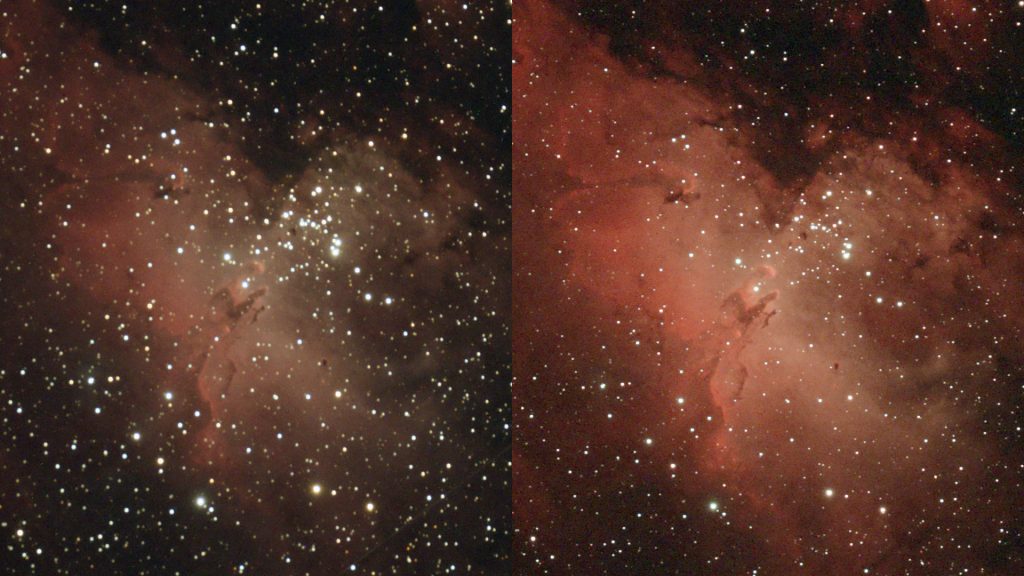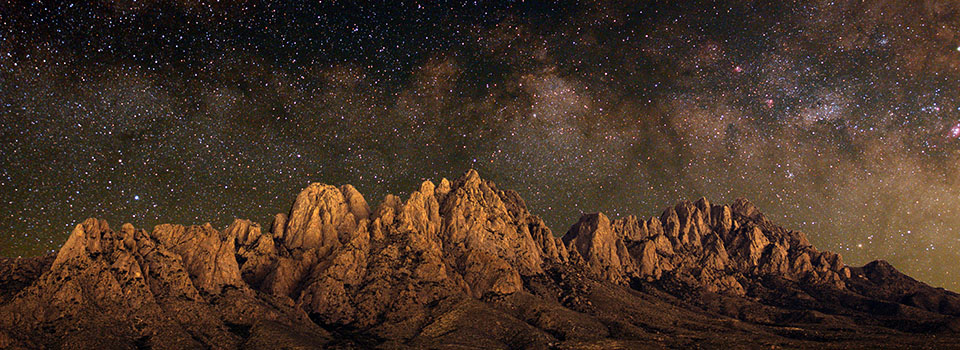When doing deep sky imaging of objects like nebula and galaxies the Moon's presence is generally considered to make it a "no-go". Moonlight washes out all the object's faint details. And, the brighter the Moon the worse its effect. But avoiding moonlight severely restricts imaging time.
A relatively new type of filter, called a dual-band filter, can be used to regain some imaging time... even in moonlight! Most narrowband filter pass light in a single region of the light spectrum. The dual-band filter has two passbands, one centered on Hydrogen-Alpha (Ha) emissions and another centered on Oxygen III (OIII). While allowing those bands to get into the camera, the filter blocks all the other interfering moonlight. The dual-band approach is thought to work better for color cameras that the single band filters.
This time of year in New Mexico is monsoon season and cloudy nights are common. So when last night promised to be clear I thought I'd give a dual-band filter a try, since a very bright 99% illuminated Moon was in the sky. This image of the Eagle Nebula (M16) was taken using a TeleVue NP101is refractor and ZWO ASI2600MC Pro color camera. I took similar images without using a filter and with using a ZWO Duo-Band filter.

The comparison is pretty dramatic. The Eagle Nebula is mostly a Ha emission object and a perfect candidate for the filter. The reddish nebulosity is significantly more visible with the filter than without. So when a clear night comes along, the Moon won't stop me anymore!

It's nice to see other astrophotographers in my neck of the woods here in NM. Thanks for the information on this, I found your website through OPT on the dual-band filter as I am looking to get one for setup as soon as I get my OSC.
Hi Joey, This filter is definitely helpful during moonlight, and probably in urban light pollution as well. I have noticed I get a reflection from it from very bright stars, but that's the unusual case. Most of the images I take don't have stars bright enough to pose a problem.